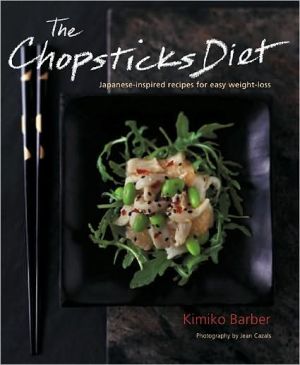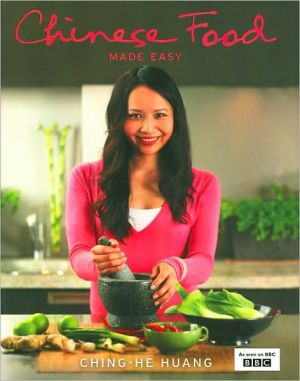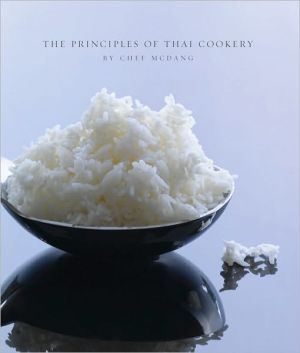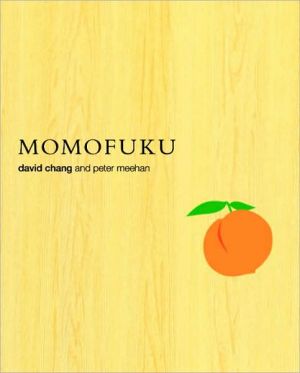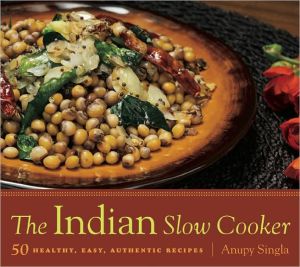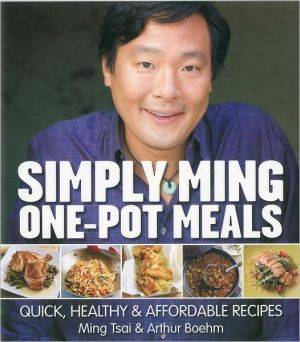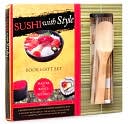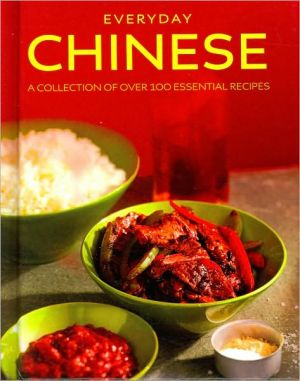Chopsticks Diet: Japanese-Inspired Recipes for Easy Weight-Loss
There is only one way to lose weight - eat less. This cookbook does not involve any calorie counting, refer to a pre-calculated index, exclude essential foods or worse still, limit the selections of food allowed. There is one simple rule: delicious and perfectly balanced Japanese-inspired meals are to be eaten with chopsticks, which naturally makes you take smaller mouthfuls and instantly reduces the amount of food you eat.
Search in google:
There is only one way to lose weight - eat less. This cookbook does not involve any calorie counting, refer to a pre-calculated index, exclude essential foods or worse still, limit the selections of food allowed. There is one simple rule: delicious and perfectly balanced Japanese-inspired meals are to be eaten with chopsticks, which naturally makes you take smaller mouthfuls and instantly reduces the amount of food you eat. Publishers Weekly Though the traditional Japanese diet is much healthier than a standard Westerners', UK teacher and author Barber (The Japanese Kitchen, Sushi) insists that chopsticks are the real Japanese health secret; both forcing diners to pay closer attention to what they're eating (thus increasing their enjoyment of it) and slowing down the process (so that ultimately fewer calories are consumed). Even if would-be dieters opt for a fork and spoon, those with a taste for Japanese will find plenty of healthy options. Breakfast selections include traditional rice porridge and smoothies (creamy with tofu rather than yogurt). Domburi (a rice bowl with various toppings) and noodle-based dishes dominate the lunch options, and an impressive array of flavorful soups (including a miso-inspired riff on gazpacho) round out the meal plan. Barber keeps dishes visually appealing, with garnishes like ruby red pomegranate seeds on Daikon, Edamame & Avocado Salad with Yuzu Vinaigrette and a lump crabmeat sushi bowl. Sushi here is what Westerners might call deconstructed: rice, nori and fillings (smoked salmon, marinated tuna) are assembled simply in a bowl rather than tightly wrapped in rolls, taking pressure off both the food and the chef. More than 70 color photos. Copyright © Reed Business Information, a division of Reed Elsevier Inc. All rights reserved.
\ Publishers WeeklyThough the traditional Japanese diet is much healthier than a standard Westerners', UK teacher and author Barber (The Japanese Kitchen, Sushi) insists that chopsticks are the real Japanese health secret; both forcing diners to pay closer attention to what they're eating (thus increasing their enjoyment of it) and slowing down the process (so that ultimately fewer calories are consumed). Even if would-be dieters opt for a fork and spoon, those with a taste for Japanese will find plenty of healthy options. Breakfast selections include traditional rice porridge and smoothies (creamy with tofu rather than yogurt). Domburi (a rice bowl with various toppings) and noodle-based dishes dominate the lunch options, and an impressive array of flavorful soups (including a miso-inspired riff on gazpacho) round out the meal plan. Barber keeps dishes visually appealing, with garnishes like ruby red pomegranate seeds on Daikon, Edamame & Avocado Salad with Yuzu Vinaigrette and a lump crabmeat sushi bowl. Sushi here is what Westerners might call deconstructed: rice, nori and fillings (smoked salmon, marinated tuna) are assembled simply in a bowl rather than tightly wrapped in rolls, taking pressure off both the food and the chef. More than 70 color photos. \ Copyright © Reed Business Information, a division of Reed Elsevier Inc. All rights reserved.\ \ \ \ \ Library JournalBarber (The Japanese Kitchen) provides approximately 100 recipes ranging from sushi to salads to soups and light suppers. While primarily simple as far as preparation goes, the recipes often call for hard-to-find ingredients, such as burdock root, agar-agar, konnyaku, and umeboshi. A brief section on ingredients includes storage tips for some items but no sources for purchase; many are fresh produce, so online sources wouldn't be applicable. The recipes emphasize freshness, and Barber often mentions specific healthful aspects of the dishes. As many of the dishes are salads or soups, techniques primarily consist of preparing and combining ingredients and heating as required. Many recipes are vegetarian, although fish, chicken, and some pork dishes are also included. Beautifully illustrated with many large, full-color close-ups, this is a nice but somewhat specialized cookbook. Purchase where there is interest (and a comprehensive Asian grocery nearby).\ —Susan Hurst\ \ \
